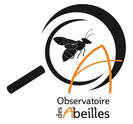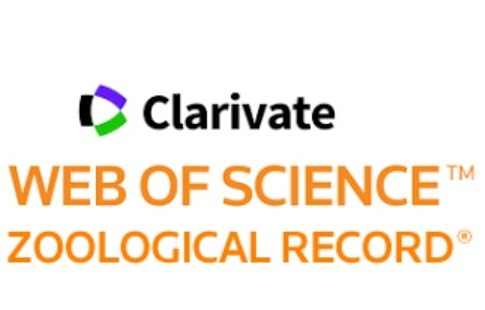Revue d'Hyménoptérologie
Journal of Hymenopterology
ISSN 2727-3806
ARTICLE |
L'inquilinisme chez les bourdons
|
Patrick Lhomme
|
Citation
Lhomme, P. (2009). L'inquilinisme chez les bourdons. Osmia, 3: 17-22. https://doi.org/10.47446/OSMIA3.6
Published (online) 2009
Indexation • Archivage - Archiving
Résumé
Chez les insectes sociaux, le coût important des soins donnés aux couvains a favorisé, au cours de l'évolution, l'apparition d'espèces tricheuses capable d'exploiter la force de travail des colonies pour faire élever leur progéniture. Chez les bourdons, de nombreuses espèces usurpent des colonies de manière facultative. Toutefois les espèces du sous-genre Psithyrus ne produisent pas de caste ouvrière et sont totalement dépendantes de leurs hôtes pour la survie de leurs sexués. L'auteur présente ici une revue des différentes adaptations et stratégies utilisées par ces bourdons inquilines pour pénétrer et exploiter le système social de leurs hôtes.
Mots-clefs
Inquilinisme, bourdons, Psithyrus, parasites sociaux
Title (translation)
Bumble Bees inquilinism
Abstract
In social insects, severe brood care costs have favoured the evolution of cheaters that exploit workers services of conspecifics or heterospecifics. In Bumblebees, a lot of species use hosts facultatively as an alternative to care for their own brood, while Psithyrus species have lost their worker caste and are completely dependant on hosts to produce their sexuals. Here is an overview of the adaptations and strategies used by bumblebees inquilines to successfully enter and exploit host social systems.
Keywords
Inquilinism, bumble bees, Psithyrus, social parasites
Références - References
Lhomme, P. (2009). L'inquilinisme chez les bourdons. Osmia, 3: 17-22. https://doi.org/10.47446/OSMIA3.6
Published (online) 2009
Indexation • Archivage - Archiving
- DOI: https://doi.org/10.47446/OSMIA3.6
- Zoobank (ICZN): http://zoobank.org/8F4D0EDB-4625-47AD-949F-F8B1FEEA01BB
- HAL (CNRS-INRAE): https://hal.archives-ouvertes.fr/hal-03029450
- Zenodo (CERN): https://zenodo.org/record/4394472
Résumé
Chez les insectes sociaux, le coût important des soins donnés aux couvains a favorisé, au cours de l'évolution, l'apparition d'espèces tricheuses capable d'exploiter la force de travail des colonies pour faire élever leur progéniture. Chez les bourdons, de nombreuses espèces usurpent des colonies de manière facultative. Toutefois les espèces du sous-genre Psithyrus ne produisent pas de caste ouvrière et sont totalement dépendantes de leurs hôtes pour la survie de leurs sexués. L'auteur présente ici une revue des différentes adaptations et stratégies utilisées par ces bourdons inquilines pour pénétrer et exploiter le système social de leurs hôtes.
Mots-clefs
Inquilinisme, bourdons, Psithyrus, parasites sociaux
Title (translation)
Bumble Bees inquilinism
Abstract
In social insects, severe brood care costs have favoured the evolution of cheaters that exploit workers services of conspecifics or heterospecifics. In Bumblebees, a lot of species use hosts facultatively as an alternative to care for their own brood, while Psithyrus species have lost their worker caste and are completely dependant on hosts to produce their sexuals. Here is an overview of the adaptations and strategies used by bumblebees inquilines to successfully enter and exploit host social systems.
Keywords
Inquilinism, bumble bees, Psithyrus, social parasites
Références - References
- Alford DV, 1975. Bumblebees. Davis-Poynter Ltd, London.
- Ball FJ, 1914. Les Bourdons de la Belgique. Annales de la Société entomologique de Belgique 58: 77-108.
- Bohart GE, 1970. The evolution of parasitism among bees. Utah state University, 30 pp.
- Bolotov IN & Kolosiva YS, 2006. Trends in the formation of biotopic complexes of bumblebees (Hymenoptera, Apidae: Bombini) in northern taiga karst landscapes of the western russian plain. Ekologiya 3: 173-183. https://doi.org/10.1134/S1067413606030039
- Bols JH, 1939. Un remarquable terrain d'hivernation de Bombus et de Psithyrus près de Louvain, à Lubbeek, en Belgique. VIIth lnternational Congress of Entomology 1938: 1048-1060.
- Brinck P & Wingstrand KG, 1951. The mountain fauna of the Virihaure area in Swedish Lapland. Acta Universitatis Lundensis 45(2): 1-69.
- Bullman 0, 1953. Psithyrus rupestris F. als Schmarotzer bei Bombus alticola Kreichb. Mittheilungen des Naturwissenschaft Vereins für Steiermark 83 : 193-194. www.zobodat.at/pdf/MittNatVerSt_83_0193-0194.pdf
- Cameron SA, Hines HM, & Williams PH, 2007. A comprehensive phylogeny of the bumble bees (Bombus). Biological Journal of the Linnean Society 91: 161-188. https://doi.org/10.1111/j.1095-8312.2007.00784.x
- Cederberg B, 1976. Snylthumlan Psithyrus norvegicus sp. Schn., boparasit hos humlan Bombus hypnorum L. (Hym., Apidae). Entomologisk Tidsktift 97: 90-91.
- Cederberg B, 1979. Odour guided host selection in Psithyrus (Hym., Apidae). Entomologisk Tidskrift 100: 128-129.
- Cederberg B, 1983. The role of trail pheromones in host selection by Psithyrus rupestris (Hymenoptera, Apidae). Entomologica Fennica 49(1): 11-16.
- Cervo R, Dani FR, Cotoneschi C, Scal C, Lotti I, Strassmann JE, Queller DC & Turillazzi S, 2008. Why are the larvae of the social parasite wasp Polistes sulcifer not removed from his host nest? Behavioral Ecology and Sociobiology 62: 1319-1331. https://doi.org/10.1007/s00265-008-0560-1
- Cumber RA, 1949. Humble-bee parasites and commensales found within a thirty miles radius of London. Proceedings of the Royal entomological Society of London A 24(10-12): 119-127. https://doi.org/10.1111/j.1365-3032.1949.tb00638.x
- Dronnet S, Simon X, Verhaeghe JC, Rasmont P & Errard C, 2005. Bumblebee inquinilism in Bombus (Fernaldaepsithyrus) sylvestris (Hymenoptera, Apidae): behavioural and chemical analyses of host-parasite interactions. Apidologie 36: 59-70. https://doi.org/10.1051/apido:2004070
- Emery C, 1909. Über den Ursprung der dulotischen, parasitischen und myrmecophilen Ameisen. Biologishes Zentralblatt 29: 352-362.
- Fisher RM, 1983a. Recognition of host nest odour by the bumble bee social parasite Psithyrus ashtoni (Hymenoptera: Apidae). Journal of the New York Entomological Society 91: 503-507. www.jstor.com/stable/25009392
- Fisher RM, 1983b. Inability of the social parasite Psithyrus ashtoni to suppress ovarian development in workers of Bombus affinis (Hymenoptera : Apidae). Journal of the Kansas Entomological Society 56: 69-73. www.jstor.com/stable/25084374
- Fisher RM, 1985. Evolution and host specificity: dichotomous invasion success of Psithyrus citrinus (Hymenoptera: Apidae), a bumblebee social parasite in colonies of its two hosts. Canadian Journal of Zoology 63: 977-981. https://doi.org/10.1139/z85-144
- Fisher RM, 1987a. Queen-workeer conflict and social parasitism in bumble bees (Hymenoptera: Apidae). Animal Behaviour 55: 1026-1036. https://doi.org/10.1016/S0003-3472(87)80159-8
- Fisher RM, 1987b. Temporal dynamics of facultative social parasitism in bumble bees. Animal Behaviour 35: 1928-1636. https://doi.org/10.1016/S0003-3472(87)80055-6
- Fisher RM 1988. Observations on the behaviours of three European cuckoo bumble bee species (Psithyrus). Insectes Sociaux 35: 341-354. https://doi.org/10.1007/BF02225810
- Fisher RM, Greenwood DR & Shaw GJ, 1993. Host recognition and the study of a chemical basis for attraction by cuckoo bumble bees (Hymenoptera: Apidae). Journal of Chemical Ecology 19(4): 771-786. https://doi.org/10.1007/BF00985008
- Fisher RM & Sampson BJ, 1992. Morphological specializations of the bumble bee social parasite Psithyrus ashtoni (Cresson) (Hymenoptera : Apidae). The Canadian Entomologist 124(1): 69-77. https://doi.org/10.4039/Ent12469-1
- Haeseler V, 1970. Zur wirtewhal des Psithyrus rupestris Fab. (Hymenoptera Apidae). Fauna Ökologie Mitteilungen III (9-10): 296-298.
- Hoffer E, 1882. Biologische Beobachtungen an Hummeln und Schmarotzerhummeln. Mitteilungen Naturwissenschaftlicher Verein Steiermark 18: 69-92.
- Hoffer E, 1889. Die Schmarotzerhummeln Steiermarks. Lebensgeschichte und Beschreibung derselben. Mitteilungen Naturwissenschaftlicher Verein Steiermark 25, 82-158.
- Höppner H, 1901. Beiträge zur Bienenfauna der Lüneburger Heide. Jahresbericht Verhandlungen Naturkunden Unterweser 1900: 9-22.
- Küpper G & Schwammberger KH, 1995. Social parasitism in bumble bees (Hymenoptera, Apidae): observations of Psithyrus sylvestris in Bombus pratorum nests. Apidologie 26: 245-254. https://doi.org/10.1051/apido:19950306
- Lenoir A, D’Ettorre P, Errard C & Hefetz A, 2001. Chemical ecology and social parasitism in ants. Annual Review of Entomology 46: 573-599. https://doi.org/10.1146/annurev.ento.46.1.573
- Løken A, 1984. Scandinavian species of the genus Psithyrus (Hymenoptera: Apidae). Entomologica Scandinavica 23: 1-45.
- Lowe RM, Ward SA & Crozier RH, 2002. The evolution of parasites from their hosts : intra- and inter-specific parasitism and Emery’s rule. Proceedings of the Royal entomological Society of London B 269: 1301-1305. https://doi.org/10.1098/rspb.2002.2008
- Lundberg H, & Svensson BG, 1977. Altitudinal distribution of Psithyrus Lep. in relation to that of their hosts Bombus LATR. in a Subalpine/Alpine area. VIIIth international Congress of IUSSI 1977: 305-306.
- May J, 1937. Bionomie rodu Bombus Latr. a Psithyrus Lep. (1). Casopis Ceskoslovenské Spolecnosti Entomologické 34: 115-118.
- May J, 1959. Cmelaci v. CSR jejich bionomie, chow a hos-podarsky vyznam. Praha. 170 pp.
- [McGregor PK], 1984. Dominance by a bumble bee social parasite (Psithyrus citrinus) over workers of its host (Bombus impatiens). Animal Behaviour 32: 304-305. https://doi.org/10.1016/S0003-3472(84)80358-9
- Móczár L, 1977. Das nest von Bombus alticola Kriechbaumer (Hymenoptera : Apidae). Acta Biologica Szegediensis 23 : 133-138.
- Müller M, 1936. Psithyrus barbutellus Kirby und P. maxillosus Klug (Apid., Hym.). Mitteilungen der deutschen entomologishen Gesellschaft 6: 73-76.
- Ornosa GC, 1984. La subfamilia Bombinae (Hym., Apidae) de la fauna española. Thèse, Universidad Complutense de Madrid, 333 pp. core.ac.uk/download/pdf/188192085.pdf
- Peeters TMJ, Raemakers IP & Smit J, 1999. Voorlopige atlas van de Nederlandse bijen (Apidae). European Invertebrate Survey Nederland, Leiden, 230 pp.
- Pekkarinen A, Teräs I, Viramo J & Paatela J, 1981. Distribution of bumblebees (Hymenoptera, Apidae: Bombus and Psithyrus) in eastern Fennoscandia. Notulae Entomologicae 61: 71-89.
- Pittioni B, 1942 . Die boreoalpinen Hummeln und Schmarotzerhummeln (Hymen., Apidae, Bombinae). I. Mitteilungen aus den Köninglichen Naturwissenschaftlichen Instituten in Sofia 15: 155-218.
- Pittioni B, 1943. Die boreoalpinen Hummeln und Schmarotzerhummeln (Hymen., Apidae, Bombinae). II. Mitteilungen aus den Köninglichen Naturwissenschaftlichen Instituten in Sofia 16: 1-78.
- Pittioni B & Schmidt R, 1942. Die Bienen des südöstlichen Niederdonau. I: Apidae, Podaliriidae, Xylocopidae und Ceratinidae. Natur und Kultur Niederdonau 19: 1-69.
- Postner M, 1952. Biologish-ökologishe untersuchen an Hummeln und ihre Nestern. Veröffentlichungen museum für Naturkunde 2: 45-86.
- Pouvreau A, 1973. Les ennemis des bourdons. I.- Étude d'une zoocénose : le nid de bourdons. Apidologie 4(2): 103-148. https://doi.org/10.1051/apido:19730202
- Rasmont P & Admaski A, 1996. Les bourdons de la Corse (Hymenoptera, Apoidea, Bombinae). Notes fauniques de Gembloux 31: 3-87.
- Reinig WF, 1935. On the Variation of Bombus lapidarius L. and its Cuckoo, Psithyrus rupestris Fabr., with Notes on Mimetic Similarity. Journal of Genetics 30(3): 321-356. https://doi.org/10.1007/BF02982243
- Richards KW, 1973. Biology of Bombus polaris Curtis and B. hyperboreus Schönherr at Lake Hazen, Northwest Territories (Hymenoptera : Bombini). Quaestiones Entomologicae 9: 115-157. biostor.org/reference/194941
- Richards OW, 1928. A revision of the european bees allied to Psithyrus quadricolor Lepeletier (Hymenoptera, Bombidae). Transactions of the Royal entomological Society of London 76: 345-365. https://doi.org/10.1111/j.1365-2311.1929.tb01410.x
- Röseler PF, 1972. Beobachtungen über die Schmarotzerhummeln Psithyrus norvegicus in einem nest der hummeln Bombus hypnorum (Hymenoptera: Apidae). Mittel Badischer Landesverein Naturkunde und Naturschultz 10: 579-581. www.zobodat.at/pdf/Mitt-Bad-Landesver-Natkde-Natschutz-Freiburg_NF_10_0579-0581.pdf
- Schmid-Hempel P, 1998. Parasites in Social Insects. Princeton University Press, Princeton, New Jersey.
- Singer TL, 1998. Roles of hydrocarbons in the recognition systems of insects. American Zoologist 38: 394-405. https://doi.org/10.1093/icb/38.2.394
- Sladen FWL, 1912. The Humble-Bee, its life-history and how to domesticate it, with descriptions of all the British species of Bombus and Psithyrus. MacMillian, London, 283 pp. https://doi.org/10.5962/bhl.title.23378
- Sramkova A & Ayasse M, 2009. Chemical ecology involved in the invasion success of the cuckoo bumblebee Psithyrus vestalis and in survival of workers of its host Bombus terrestris. Chemoecology 19: 55-62. https://doi.org/10.1007/s00049-009-0009-7
- Sramkova A, Schulz C, Twele R, Francke W & Ayasse M, 2008. Fertility signals in the bumblebee Bombus terrestris (Hymenoptera: Apidae). Naturwissenschaften 95(6): 515-522. https://doi.org/10.1007/s00114-008-0353-4
- Stoeckhert FK, 1954. Fauna Apoideorum Germaniae. Abhandlungen der bayerischen Akademie der Wissenschaften 65: 1-87. www.zobodat.at/pdf/Abhandlungen-Akademie-Bayern_NF_65_0001-0087.pdf
- Svensson BG, 1980. Species-isolating mechanisms in male bumble bees (Hymenoptera, Apidae). Ph-D Thesis, Uppsala University, Uppsala, 42 pp.
- Tkalců B, 1969. Ergebnisse der Albanien-Expedition 1961 des deutschen Entomologischen Institutes. 78. Beitrag. Hymenoptera: Apidae IV (Bombinae). Beiträge zur Entomologie 19(7/8): 887-916. https://doi.org/10.21248/contrib.entomol.19.7-8.887-916
- Van Honk C, Röseler PF, Velthuis H & Malotaux M, 1981. The conquest of a Bombus terrestris colony by a Psithyrus vestalis female. Apidologie 12: 57–68. https://doi.org/10.1051/apido:19810105
- Vergara CH, Schroder S, Almanza MT & Wittmann D, 2003. Suppression of ovarian development of Bombus terrestris workers by B. terrestris queens, Psithyrus vestalis and Psithyrus bohemicus females. Apidologie 34: 563-568. https://doi.org/10.1051/apido:2003056
- Voveikov GS, 1953. Estestvennaya smena samok vo cem’ya Schmelej (Hym. Bomb.). Entomologzrheskoe Obozrenie 33: 174-181.
- Westrich P, 1989. Die Wildbienen Baden-Württembergs. Spezieller Teil: Die Gattungen und Arten. Eugen Ulmer GmbH & Co, Stuttgart, 972 pp.
- Yarrow IHH, 1970. Is Bombus inexspectatus (Tkalců) a workerless parasite? Insectes Sociaux 17: 95-112. https://doi.org/10.1007/BF02223070
- Zimma BO, Ayasse M, Tengo J, Ibarra F, Schulz C & Francke W, 2003. Do social parasitic bumblebees use chemical weapons? Journal of Comparative Physiology A 189: 769– 775. https://doi.org/10.1007/s00359-003-0451-x










